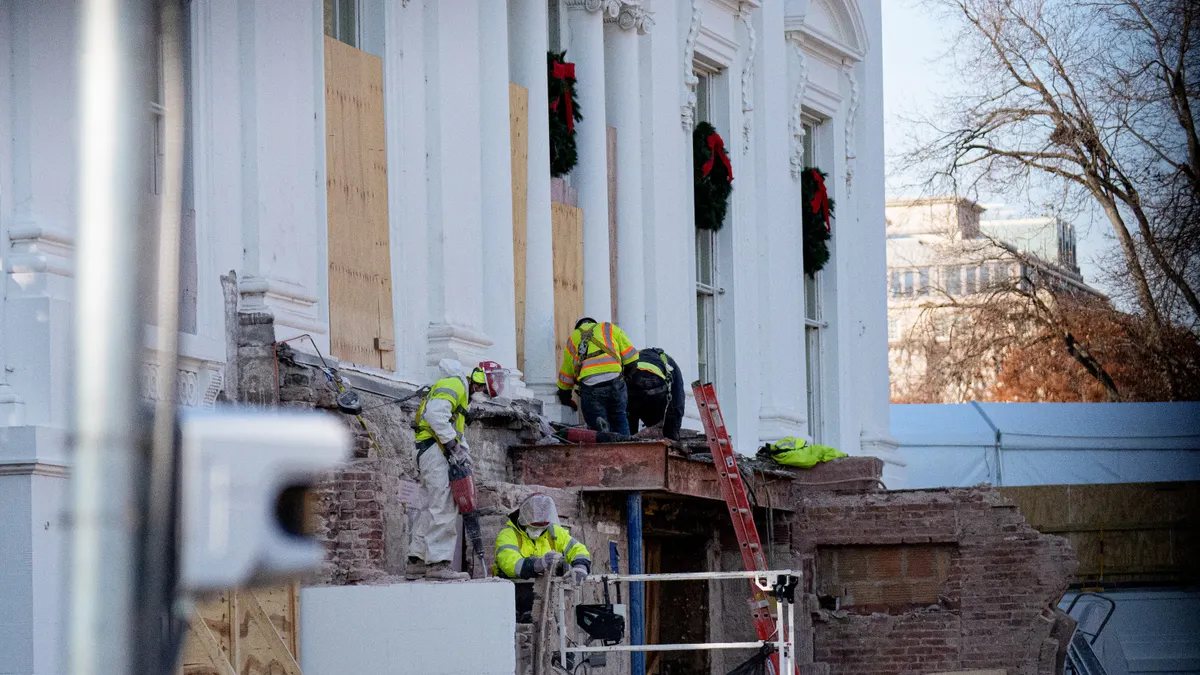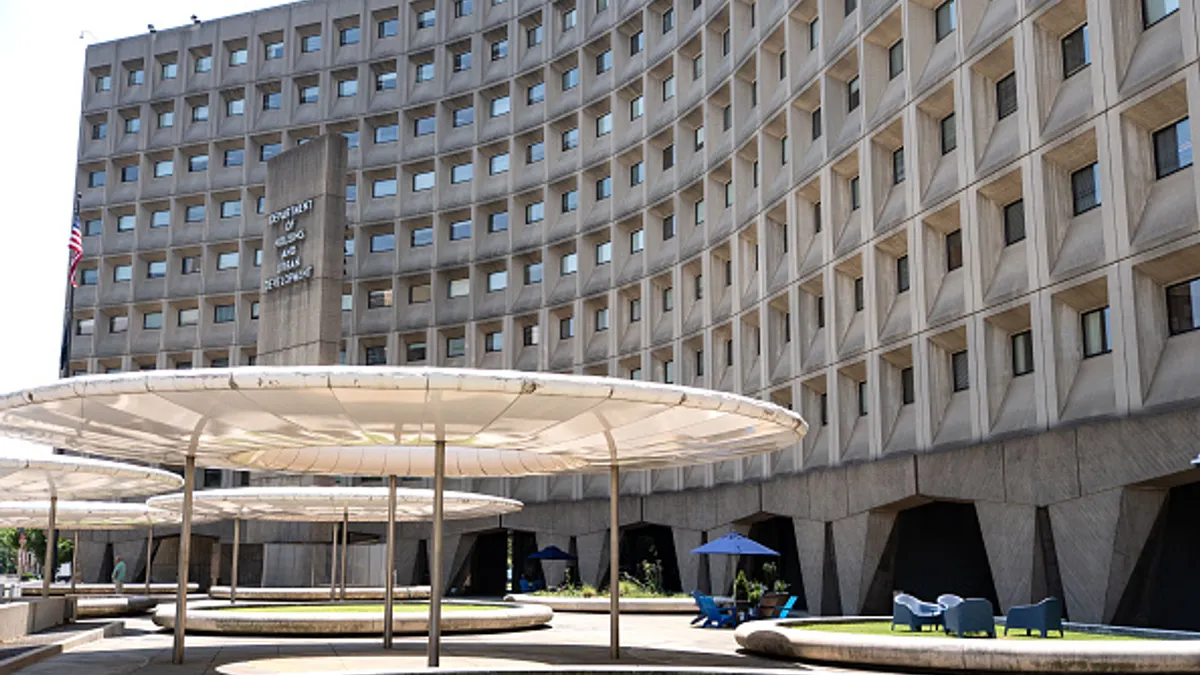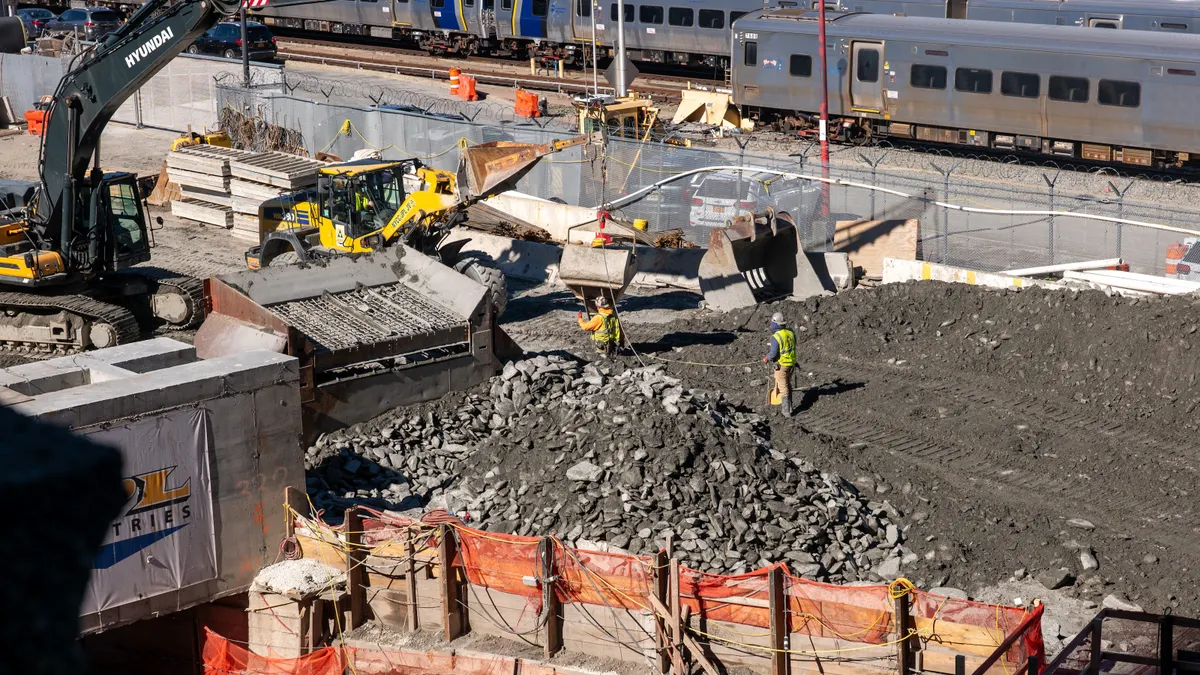This feature is a part of “The Dotted Line” series, which takes an in-depth look at the complex legal landscape of the construction industry. To view the entire series, click here.
Sometimes it seems like legal disputes, claims and litigation are just part of construction’s DNA.
“Most contractors are veterans at battling it out at the courthouse,” said Marc Gravely, a San Antonio, Texas-based construction attorney who typically represents owners in disputes. “Nobody likes conflict, but contractors seem to mind it less.”
Just look at the latest construction dispute analysis from HKA, the U.K.-based risk mitigation consultant. Of the more than $325 billion in projects it analyzed in the Americas this year, disputed dollar amounts averaged about 33%, or one-third, of average project costs.
The top three causes of disputes in the region, according to the report, were:
- Change in scope.
- Physical conditions that were unforeseen.
- Design that was incorrect.
Attorneys say they almost always try to mediate or arbitrate differences between owners and contractors before filing papers. But disputes still may end up in court, in some cases, due to the ease with which a matter can be entered into litigation.

“It doesn’t cost a lot of money to get to the courthouse,” said Chip Pierce, a member of New York City-based law firm Rosenberg & Estis and head of its construction practice. “And a lot of times litigation seems great because you can join everyone to the suit. But once you get there, it can become very lengthy and expensive.”
For that reason, avoiding these disputes before they start can help all involved, while getting a project across the finish line on time and on budget. Here are some ways to keep projects conflict free:
Change in scope
For contractors, changes in scope equate to change orders, which are submitted to owners on projects when unexpected issues arise that will increase the original costs.
According to HKA, changes in scope often come about when a project is fast-tracked and started before final specifications are complete. One way to avoid that is to make sure work doesn’t begin before all design and engineering plans are fully baked.
But that’s often easier said than done, especially when delays have mounted during the COVID-19 pandemic due to material and labor shortages.

“Many owners don't want to wait until final engineering is performed before they begin construction because time is money,” said David Owen, partner at Bradley Arant Boult Cummings in Birmingham, Alabama, who typically represents general contractors. “If they’re building a project, they're building it for a reason and they usually want it sooner rather than later.”
Attorneys say the best way to avoid disputes over changes in scope is to draft crystal clear language for each party’s responsibilities in the contract, and then track each step along the way.
“If there are legitimate disagreements in change of scope after that, whoever has kept the best records typically wins that battle,” Gravely said.
Owen recommended that to avoid disputes of scope, that risk be divided in a contract to the party who can control it. In other words, if an owner pays for the design, they should warranty it to the contractor.
Likewise, if labor is an issue, contractors should control that risk since they are the party most able to solve that problem. But sharing all risks across the board should be avoided, Owen said.
“If everybody is responsible, then no one is responsible,” Owen said.
Unforeseen physical conditions
In projects that invariably start by turning dirt and digging below grade, unexpected site conditions should be expected.
Attorneys say to avoid disputes over those surprises, do the leg work upfront to know as much about the site as possible. Then, delineate who should own an unknown before it’s discovered, and what process should be followed once it is.
For example, before work begins on a site, owners should make a reasonable effort to ascertain as much information as possible about the physical conditions of the property. Again, the guidance attorneys give is to have the party who can do something about the risk control it.
“So an owner should really make an effort to have probes done of the property at the beginning, because they’re really the ones best positioned to take that risk,” Pierce said. “If they don’t, the contractor is going to assume there’s boulders under there, and he’s going to inflate his price to compensate for it.”
But even when those steps are taken, unknowns can emerge. To avoid a dispute about them, spell out different options to take when they emerge.
“Contractors can't see any further into the ground than the owner can,” Owen said. “So if you're on a project where you're installing deep foundations and there's a chance the foundations might have to extend twice as deep as what the design indicates, then that should be addressed on the front end.” Indeed, some contracts might break down dollar amounts payable for each extra foot a contractor has to dig.
The contractor’s responsibilities once an issue arises should also be addressed.
“The first thing, as an owner, that I want to see is a really short time period that the contractor has to put us on formal notice when a problem is found,” said Pierce, who typically represents owners. Once a problem emerges, owners should be notified within five to 10 days, Pierce said
Design was incorrect
In the traditional design-bid-build process, where an owner hires an architect to create a design before the project goes to bid, any problems with that design typically fall to owner.
“The standard rule is that if the owner provides the design, it warrants that design,” Owen said. “If there are mistakes, that would be a breach of contract, and the contractor would be entitled to damages.”
To avoid getting to that point, contractors should conduct a thorough review of design documents before completing their bid.
“I like to make the contractor responsible for a constructability review, if I can, on the drawings,” Pierce said.
From the owner’s perspective, though, it can be difficult to know if a design is sound at the beginning of a project.

“Remember, contractors and design professionals have done hundreds of these projects,” said Gravely. “But an owner may only go through this a handful of times in their entire career.”
For that reason, Gravely recommends owners get a third-party opinion on a design and not just rely on the word of an architect who may modify existing designs from other projects in the interest of cost or time savings. While each could be an advantage for the owner, they could also backfire if the specifics of a past design don’t align with code or structural requirements in a new one.
“The best thing an owner can do is to hire an architectural consultant who actually knows what they're doing and will stand up for the owner,” Gravely said. “On the design professional side of things, you want a true, independent expert on speed dial.”
____________________________________________________________
The Dotted Line series is brought to you by AIA Contract Documents®, a recognized leader in design and construction contracts. To learn more about their 200+ contracts, and to access free resources, visit their website here. AIA Contract Documents has no influence over Construction Dive's coverage within the articles, and content does not reflect the views or opinions of The American Institute of Architects, AIA Contract Documents or its employees.




















